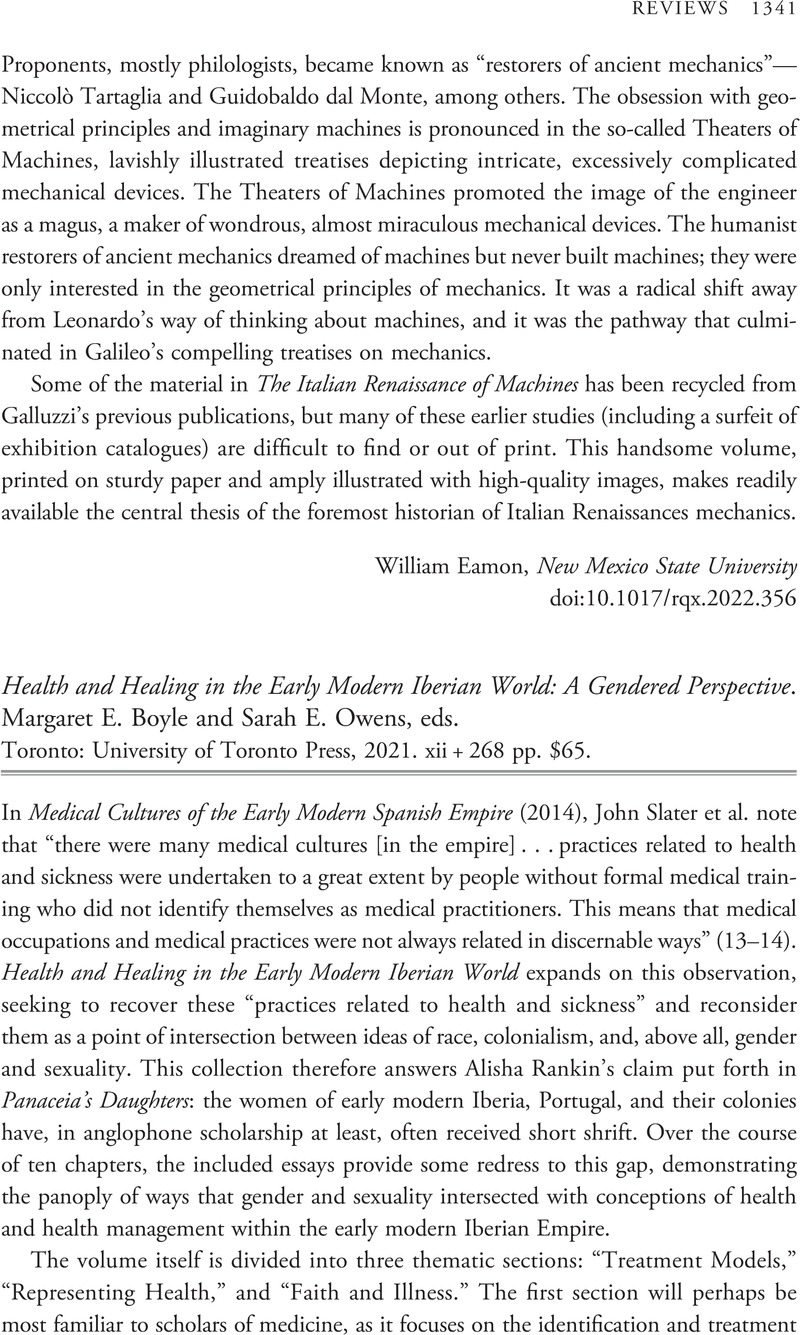No CrossRef data available.
Article contents
Health and Healing in the Early Modern Iberian World: A Gendered Perspective. Margaret E. Boyle and Sarah E. Owens, eds. Toronto: University of Toronto Press, 2021. xii + 268 pp. $65.
Review products
Health and Healing in the Early Modern Iberian World: A Gendered Perspective. Margaret E. Boyle and Sarah E. Owens, eds. Toronto: University of Toronto Press, 2021. xii + 268 pp. $65.
Published online by Cambridge University Press: 09 January 2023
Abstract
An abstract is not available for this content so a preview has been provided. Please use the Get access link above for information on how to access this content.

- Type
- Review
- Information
- Copyright
- Copyright © The Author(s), 2022. Published by the Renaissance Society of America



